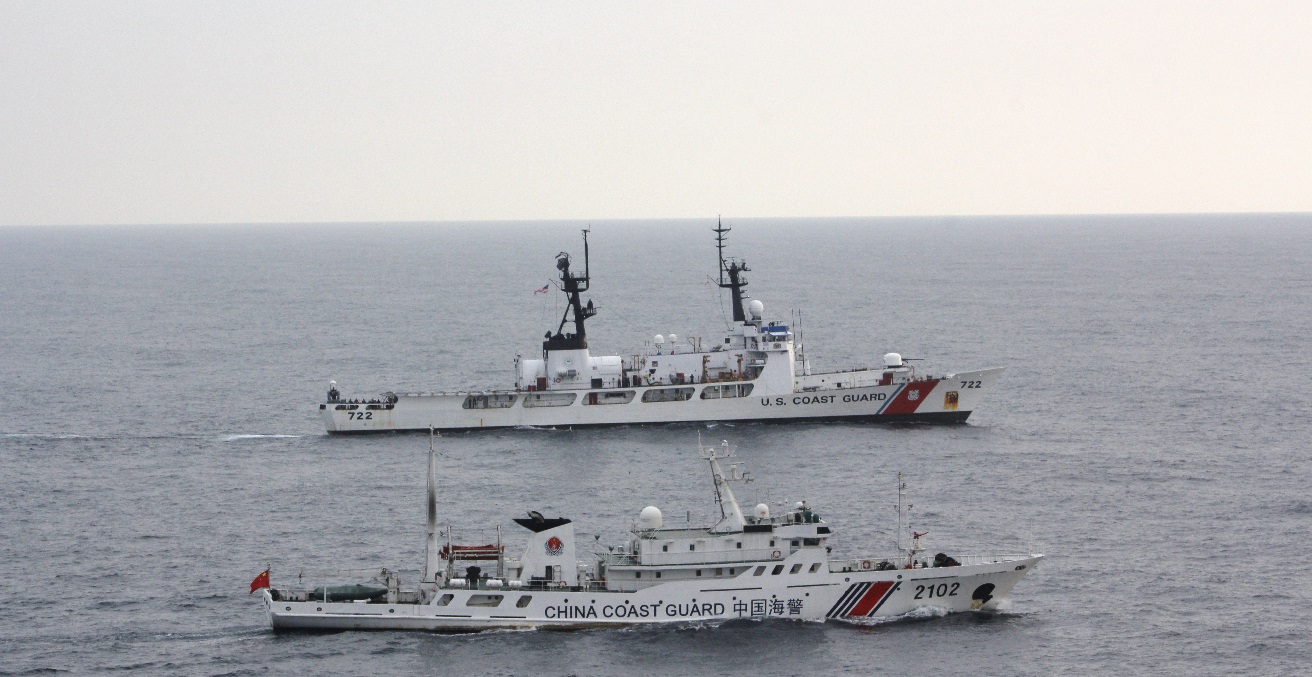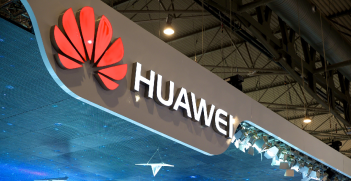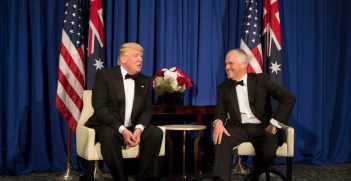The Taiwan Frontier and the Chinese Dominance for the Second Island Chain

As China seeks to dominate the island chains in the Western Pacific, the Taiwan Crisis stands in its way. For China to take full control of these island chains, it must first seize Taiwan, the “breakaway province,” either through political influence or by military invasion.
China’s maritime strategy, or the “Island Chain Strategy,” is a geographical security concept crafted by the United States in the 1940s to deter China and the Soviet Union’s maritime ambitions. Two island chains in the Western Pacific are noteworthy. The first comprises the Kuril Islands, the main Japanese archipelago, Okinawa, the northern part of the Philippine archipelagos, the Malay Peninsula, and Taiwan. The second chain consists of the islands of Japan stretching to Guam and the islands of Micronesia. China has managed to establish a firm presence through its grey zone operations in the first island chain. However, China has yet to establish a permanent presence in Taiwan to take hold of the first island chain completely.
Chinese Domination in the First Island Chain
To become the dominant power in Asia, China must first become the preeminent power in the first island chain. This endeavor is necessary because China relies heavily on the strategic waterways for maritime trade to secure its economy. According to the US Department of Defense’s Military and Security Developments Involving the People’s Republic of China 2019 Report, China has been establishing communication, aviation and port facilities, fixed-weapons positions, and barracks in the Spratly Islands since 2018. Developing a strong and permanent military presence in the first island chain would give China control of the major shipping routes in Asia, and help in establishing itself as a dominant global power.
The Chinese Coast Guard (CCG) frequently harasses fishing and survey vessels of other claimant states in the South China Sea. This year, a Chinese warship laser-tagged a Philippine Navy ship. A Chinese survey vessel, Haiyang Dizhi 8, illegally entered Malaysia’s maritime exclusive economic zone and tailed a Malaysian state-owned oil company’s contracted ship. On 22 May 2020, Beijing announced a $178.2 billion military budget, an increase of 6.6 per cent from 2019. Also, in May, the CCG harassed Japanese fishing vessels in the Diaoyu/Senkaku Islands. The militarisation of contested islands and harassment of foreign vessels from Diaoyu/Senkaku down to the Malay Peninsula exposes China’s intention and strategy to control the first island chain.
Second Island Chain: The Next Frontier?
Once China solidifies its power in the first island chain, its next target would be the second island chain. China’s presence in the second island chain would give Beijing control of the middle of the Pacific, which serves as a strategic military and economic outpost. The US’ withdrawal from the Trans-Pacific Partnership in 2017 has emboldened China to fill the vacuum of influence in the Western Pacific. In September 2019, China’s economic support for the Solomon Islands led the Pacific state to switch its diplomatic recognition of Taiwan to China. Soon after, Kiribati followed suit.
In December 2019, China vowed to provide economic assistance for infrastructure development to Micronesia. Notably, Micronesia could serve as a strategic location for China to counter American military presence in Guam. However, the US has agreements with Micronesia, Palau, and the Marshall Islands – the Compacts of Free Association – which gives the US exclusive access to the land, sea, and air routes of these island states. Although China courts the Pacific islands with promises of economic investments, they are still traditionally tied to the US. This fact adds difficulty for China, as military presence without a strategic basing to penetrate the second island chain will be hard to achieve.
The Taiwan Frontier
History may indicate that China is bound to dominate the seas one day. But geography has taken vengeance against Chinese aspirations. Advancing its position in the Western Pacific means dealing with the democratic island of Taiwan first. Arguably, Taiwan is an island fortress whose defence spending is impossible for Chinese strategic planners to ignore.
Thanks to the 1979 Taiwan Relations Act (TRA), Taiwan enjoys political support from American lobbyists. Without directly citing Beijing, the TRA requires Washington to help Taipei achieve defensive capacity against any form of threat or coercion. In upholding its end, the US supplies one-third of Taiwan’s imported weaponry. Since Chinese President Xi Jinping’s ascension to power in 2012, Beijing has undertaken an ambitious project for the “Great Rejuvenation of the Chinese Nation.” The People’s Liberation Army underwent unprecedented military reforms under Xi through restructuring and modernisation to become a “world-class” armed force that can win a high-tech, joint, short-duration, high-intensity modern war – including an invasion of Taiwan.
Taipei’s Nationalist Party, the Kuomintang (KMT) vies for a peaceful dialogue with Beijing using the 1992 Consensus – a meeting in Hong Kong between Beijing officials and KMT that analysed the “One China Policy” with different interpretations. However, Taiwan’s Democratic Progressive Party (DPP) denies that a “consensus” ever happened. Tsai Ing-wen’s presidential victory in 2016 significantly transformed the political opinion of the island-nation. During Tsai’s presidency, many people in Taiwan have begun to identify themselves as Taiwanese rather than Chinese and seek greater economic ties with the US. Beijing disapproves of this trend and has branded the DPP as “separatist” hawks in the 2019 National Defence White Paper. China has reaffirmed that reunification with the island would be met with force if necessary, so long as DPP separatists continue to influence the people and find alignment with “foreign intervention.” As a response, Taipei developed a defence concept to assert Taiwan’s co-existence with China. Xi may confront a difficult choice for a bloody invasion of the island against a military that is not just strong-willed and well-equipped but also backed by the US military.
Moreover, US President Donald Trump has elevated Taiwan into a real-deal security partner for a free and open Indo-Pacific. In the context of the US Free and Open Indo-Pacific Strategy, Trump perceives China as a revisionist power and a peer competitor in the region for its interests there. Trump has also signed the TAIPEI Act in 2020, which deepens American support for the island-nation. He also approved a $180 million worth arms sale in the same year amid rising US-China rivalry. His policies add complexity in the execution of the TRA. With China tightening its grip in its backyard, Beijing intends to isolate Taipei. Trump would not let this happen under his watch.
This dilemma is the point – China was able to shape relative dominance in both South and East China Seas because of its Grey Zone Operations, seeking to avoid military confrontations. However, the invasion of Taiwan remains a question regarding China’s actual military might. Moreover, even if Beijing uses its strategic tools against Taiwan, it would have to face the US Seventh Fleet, whose patrols are also present within the first island chain, and whose nearest basing is in Guam. This high-intensity confrontation over Taiwan makes the second island chain unlikely to be the next frontier.
Conclusion
The recent trends show that the Chinese dream has become more aggressive in the first island chain. Moreover, the Solomon Islands and Kiribati’s diplomatic switch from Taiwan to China hints at China’s push for its presence in the second island chain. But as long as China is still bogged down with Taiwan, only the first island chain remains as China’s frontier, making its dominance of the second island chain unlikely – unless Xi forces his hand. If the DPP continues to find American support for rejecting the 1992 Consensus, this may well serve as trigger for Chinese aggression.
Joshua Bernard B. Espeña is a defence analyst in the Office for Strategic Studies and Strategy Management of the Armed Forces of the Philippines. He is currently pursuing his master’s degree in International Studies at the University of the Philippines, Diliman. He writes on the Great Power Politics of the Indo-Pacific, ASEAN Studies, and Philippine Strategic Culture. He can be reached at LinkedIn.
Chelsea Anne A. Uy Bomping is a researcher with interests in the South China Sea, Southeast Asian affairs, and Cross-Strait relations. She is currently pursuing her masters in political science at De La Salle University.
Disclaimer: The views of the authors do not reflect the views of their affiliated offices, the Philippine Navy, the Armed Forces of the Philippines, nor the Philippine Government. All views are entirely their own and for the purpose of academic debate only.
This article is published under a Creative Commons Licence and may be republished with attribution.





